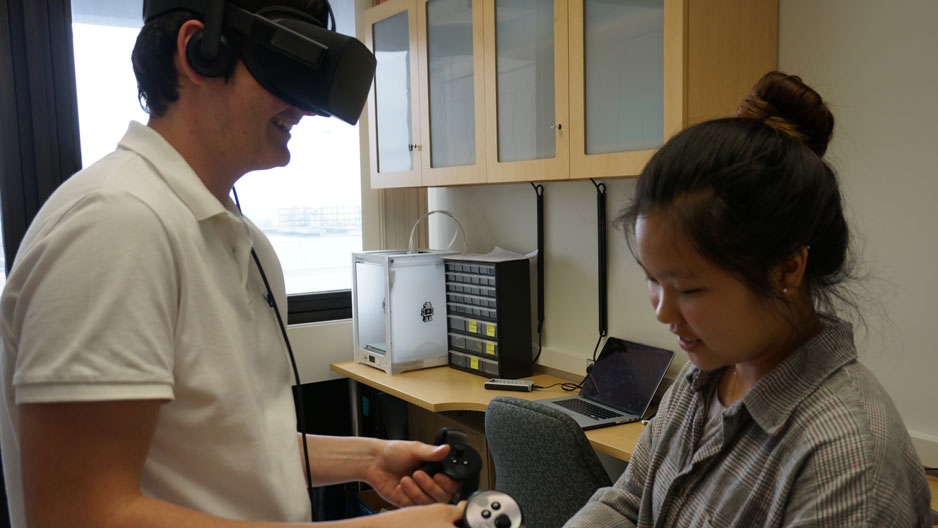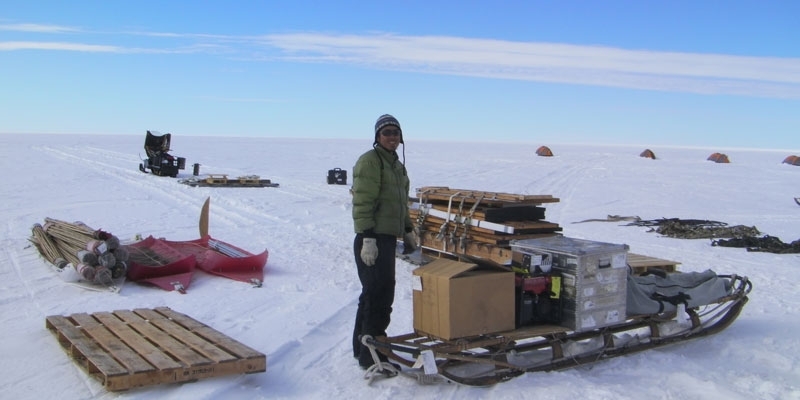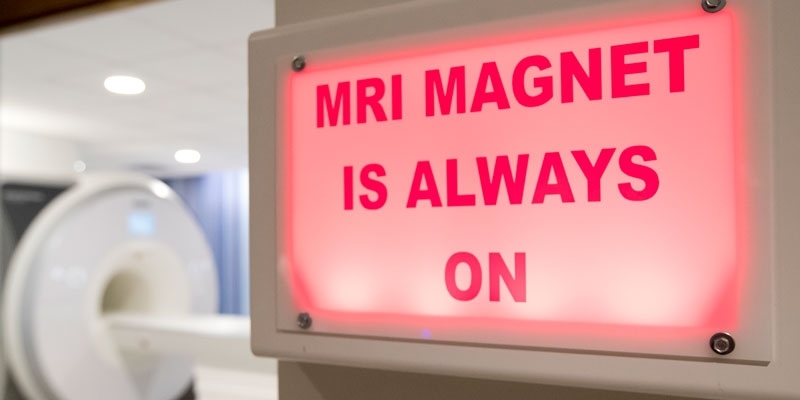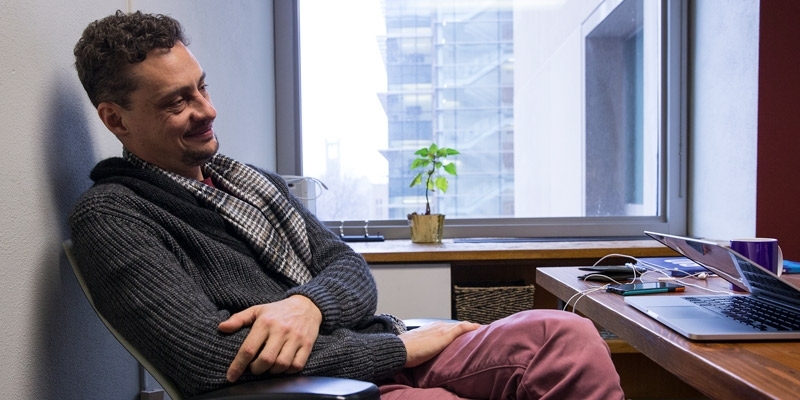College of Science and Technology launches hub for interdisciplinary research
The Center for Computational Mathematics and Modeling, or C2M2, encourages collaboration across disciplines.

With robots, virtual reality gear, a 3-D printer and a whiteboard filled with equations, the Mathematics Department’s new Center for Computational Mathematics and Modeling (C2M2) aims to provide a home for cross-disciplinary research among mathematics, engineering and other sciences, as well as to give students across Temple the opportunity to turn theoretical ideas into hands-on, practical learning.
“Sometimes studies in mathematics fall short of reality because of the lack of a connection to experimental or engineering practices. The center will provide hands-on resources, and a place where teams can come together to solve real-world problems in a practical, lab experience with a foundation in computational mathematics,” said center director Benjamin Seibold, an associate professor of mathematics.
“The center and the lab enable us to look at things through a perspective that is not possible through the lens of equations and computational methods alone,” Seibold continued. “It provides a great resource for students. We have several undergraduate and graduate students involved with the center already, doing a wide variety of research projects.”
For example, students in C2M2, under the supervision of Associate Professor of Mathematics Gillian Queisser, are using virtual reality to immerse themselves in a visual world of neuroscience geometry, data and computation. Several students, working alongside Seibold, are using the interplay of models, simulations and robotic experiments to understand how self-driving cars would impact traffic flow.
In addition to their own research, students working with the center will have the opportunity to interact with peers and faculty across disciplines. “One student builds a robot and controller,” Seibold explained, “and another student looks at real traffic data and develops a traffic model that can be incorporated on the robots. Collaboratively, they build a platform that can provide new insights into real traffic flow.”
The goal of C2M2 is to provide a space for researchers at every level—faculty, post-doctoral fellows, graduate students and undergraduates—to engage in category-defying research.
Seibold said the center’s success will be defined by the new research, student training and externally funded projects that blur the boundaries of traditional academic disciplines.
“This center and what we are trying to achieve is something that is not very common. I am not aware of mathematics labs or centers at other universities that have precisely this mission,” said Seibold, adding that he envisions C2M2 attracting new students, faculty and funding to the College of Science and Technology and Temple as a whole. “Our center brings out yet another side of mathematics that can broaden the horizons of our students.”
He added that collaboration has historically been a challenge due not to a lack of willingness, but a lack of space for researchers from different disciplines to work together and exchange ideas.
“C2M2 provides such an environment,” he said.
—Hannah Amadio


